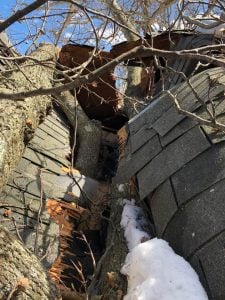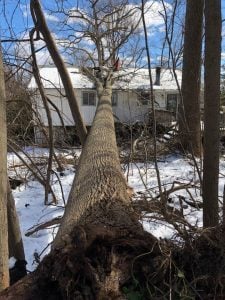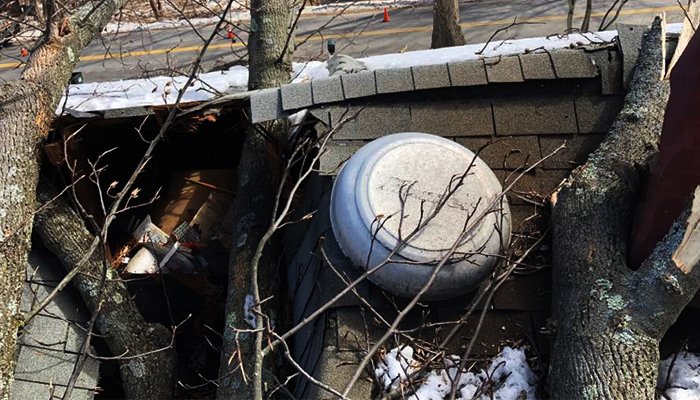At the very least, you may have noticed several broken branches lying around your yard after the last big storm we had. A number of areas were left with no power due to trees falling on powerlines, and/or downed trees on properties, and homes. Unfortunately, with such storms and with heavy winds, this type of damage is often inevitable. As March continues to be an active month for storms, the question of whether emergency tree removal is covered under your homeowners insurance policy may become increasingly popular.
 While emergency tree removal services and/or the damages associated with these downed trees are not always covered under your homeowners insurance policy, you may be pleasantly surprised to hear that they often are. If these required services are covered or not depends on several factors like, what caused the tree to fall, what kind of damage occurred, and your policy deductible and limit.
While emergency tree removal services and/or the damages associated with these downed trees are not always covered under your homeowners insurance policy, you may be pleasantly surprised to hear that they often are. If these required services are covered or not depends on several factors like, what caused the tree to fall, what kind of damage occurred, and your policy deductible and limit.
Your homeowners policy typically protects your home and other structures within your property, like a fence or shed. If an otherwise healthy tree fell during a large storm damaging any part of your home, your policy will likely cover the repairs associated with structural damages. However, what your policy will likely not cover is any losses associated with negligence or maintenance-related issues. In other words, if your tree was extremely rotted and ready to fall down prior to the storm, your insurance policy will likely not cover the damages associated with this tree falling during a storm.
If your tree falls but does not cause any damages to structural components on your property, your policy will typically not cover tree removal or debris cleanup.
If a tree from your neighbor’s yard landed on any structural part of your home causing damages, your policy will most likely cover the removal cleanup as well.
 The most important factor to consider when evaluating if your homeowners policy will cover your emergency tree removal is your insurance deductible. This is a set amount that you will typically have to pay before your insurance will help with covered loss. So, if your deductible is $1000 and your tree removal services cost $900, putting this claim through with insurance is basically ineffective because you would be required to pay $1000 before receiving funds.
The most important factor to consider when evaluating if your homeowners policy will cover your emergency tree removal is your insurance deductible. This is a set amount that you will typically have to pay before your insurance will help with covered loss. So, if your deductible is $1000 and your tree removal services cost $900, putting this claim through with insurance is basically ineffective because you would be required to pay $1000 before receiving funds.
It is important to note that most policies have coverage limits, and because of this when dealing with putting tree damages through insurance, you should always reference your policy and check with your agent to learn more about your coverage, and how it relates to storm damage.
What is a proactive method for avoiding storm tree damages?
- Conducting regular tree inspections to evaluate weaknesses, illness, hazard branches, etc.
- Dealing with potentially hazardous limbs and/or dead or dying trees prior to a storm can help to avoid damages.
In addition to wind; dead, weak, or dying branches can break when weight is added, like large amounts of snow accumulation and/or ice. If you have trees close to your home, and/or large branches extending over your roof or other structural components of your home, it is important to have regular tree inspections done, as well as putting into a place a regular maintenance and plant health care program. This will ensure that you are keeping your healthy trees healthy and help fight diseases. Contact Red Cedar today for emergency tree removal services, tree inspection services, stump grinding services, and tree pruning and maintenance services!


